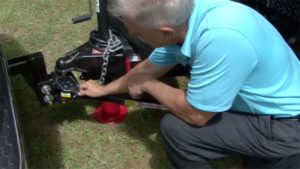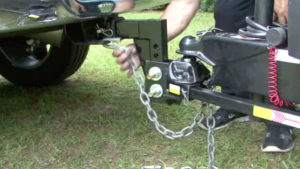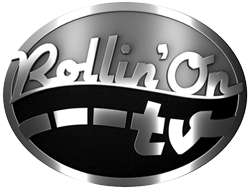rv Education 101
RV Education 101 - How to Hitch and Unhitch your Travel Trailer.
In this segment, I wanna demonstrate hitching and unhitching the travel trailer to the truck using an Equal-i-zer 4-Point Sway Control Hitch. Keep in mind, every brand of weight-distributing hitch has different steps for hitching and unhitching. It’s important that you follow the hitch manufacturer’s directions for proper hitching and weight distribution for your setup. If you aren’t sure how your weight-distributing hitch works, have a qualified RV service facility walk you through the steps. Let’s hitch the trailer right now.
 I already adjusted and set the equalizer hitch up for the truck and trailer combination. The hitch setup should be done by an authorized RV service facility. When you use an Equal-i-zer brand hitch, there are no add-on sway control devices. The hitch has an integrated four-point sway control, and it’s easy to hitch to the truck. Here’s how it works. Hitching the tow vehicle and trailer. Hitching and unhitching should always be done on a level, flat surface. Turn the tongue jack clockwise and raise the trailer tongue until there’s plenty of clearance for the hitch ball. With help from an assistant, slowly back the tow vehicle until the hitch ball is aligned with the trailer coupler. Put the truck in “park.” With the coupler-latch mechanism open, lower the tongue jack until the coupler seats firmly on the hitch ball. Lock the coupler latch and secure it using a pin or lock. Depending on the type of spring bars you have, follow the manufacturer’s directions and attach the spring bars to the hitch head. Use the tongue jack to raise the trailer tongue and tow vehicle until you can swing the spring arms into place over the trailer brackets. With the Equal-i-zer brand hitch, simply pin the arms into place. Retract the jack, turning it counterclockwise, until there’s plenty of clearance for towing. Cross the safety chains to form an “X” and attach the chains to a permanent fixture on the tow vehicle, usually the hitch receiver.
I already adjusted and set the equalizer hitch up for the truck and trailer combination. The hitch setup should be done by an authorized RV service facility. When you use an Equal-i-zer brand hitch, there are no add-on sway control devices. The hitch has an integrated four-point sway control, and it’s easy to hitch to the truck. Here’s how it works. Hitching the tow vehicle and trailer. Hitching and unhitching should always be done on a level, flat surface. Turn the tongue jack clockwise and raise the trailer tongue until there’s plenty of clearance for the hitch ball. With help from an assistant, slowly back the tow vehicle until the hitch ball is aligned with the trailer coupler. Put the truck in “park.” With the coupler-latch mechanism open, lower the tongue jack until the coupler seats firmly on the hitch ball. Lock the coupler latch and secure it using a pin or lock. Depending on the type of spring bars you have, follow the manufacturer’s directions and attach the spring bars to the hitch head. Use the tongue jack to raise the trailer tongue and tow vehicle until you can swing the spring arms into place over the trailer brackets. With the Equal-i-zer brand hitch, simply pin the arms into place. Retract the jack, turning it counterclockwise, until there’s plenty of clearance for towing. Cross the safety chains to form an “X” and attach the chains to a permanent fixture on the tow vehicle, usually the hitch receiver.
 Connect the breakaway lanyard to a permanent fixture on the tow vehicle. Plug the 12-volt trailer light cord into the seven-way receptacle on the back of the tow vehicle. Check all the lights for proper operation. Remove the wheel chocks. Test the operation of the trailer brakes, and you’re ready to go.
Connect the breakaway lanyard to a permanent fixture on the tow vehicle. Plug the 12-volt trailer light cord into the seven-way receptacle on the back of the tow vehicle. Check all the lights for proper operation. Remove the wheel chocks. Test the operation of the trailer brakes, and you’re ready to go.
Unhitching the travel trailer. Hitching and unhitching should always be done on a level, flat surface. Chock the trailer wheels so the trailer cannot move or roll when you disconnect it from the tow vehicle. If the ground is soft or wet, place a piece of blocking under the foot of the tongue jack. Disconnect the 12-volt trailer light cord and the breakaway switch lanyard. Disconnect the safety chains. Raise the tongue jack high enough to take pressure off of the spring arms. Remove the pins from the spring-arm brackets. Swing the arms out of the way. Remove the spring arms from the hitch head. Lower the tongue jack until all of the weight is resting on the hitch ball. Remove the pin or lock from the coupler latch and open the latch. Raise the tongue jack until there is enough clearance to pull the tow vehicle forward.
That’s all there is to using an Equal-i-zer brand hitch, but keep what I said in mind about each brand of hitch having its own hitching and unhitching instructions.
Happy camping from Mark Polk of RV Education 101

